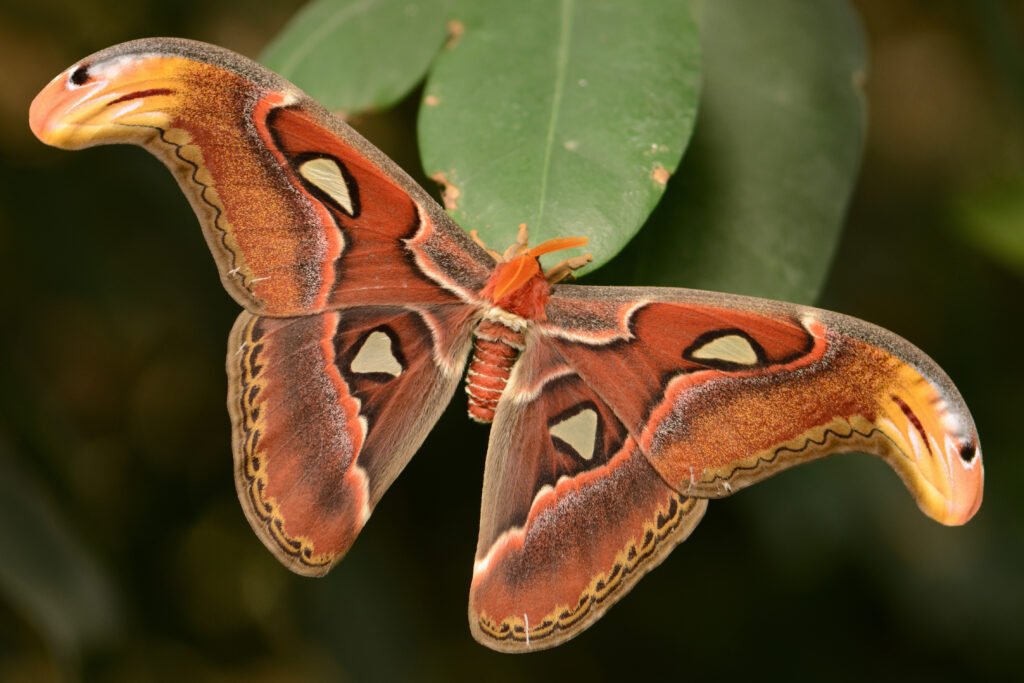
Timed Moth Evolution Secrets.
In this natural world, the insects more admired are often butterflies and honey bees. This is mostly for their beauty and skills to grow. Moths, often overshadowed by their more colorful cousins, the butterflies, are fascinating creatures in their own right. They play an essential role in ecosystems, serving as pollinators, prey for other animals, and indicators of environmental health. One of the most intriguing aspects of moths is their evolution over millions of years. They adapt to their environments with remarkable precision. This evolution follows a carefully timed process, orchestrated by what scientists call “genetic clockwork.” Timed Moth Evolution Secrets: Discover how moths adapt and survive with precision through their genetic clockwork in a changing world.

Timed Moth Evolution Secrets: The Genteic Clockwork.
Every organism evolves and adapts to the changing environment. Although some do it with ease, some with difficulty and some become extinct. Moth evolution centers on their genetic makeup—a complex system of genes and proteins that controls their appearance and behavior. A key mechanism in this process is the genetic clock, which regulates gene expression over time. This “clock” ensures that moths activate or deactivate certain genes at the right moment, helping them adapt to changing climates, predators, and other factors.
The concept of a genetic clock isn’t unique to moths; it’s a fundamental aspect of all living organisms. Over millions of years, moths’ clockwork has fine-tuned, allowing them to thrive in diverse habitats, from the tropics to the tundra.
The Role of Natural Selection.
Charles Darwin proposed a theory called Natural Selection. It spoke about living organisms adapting and surviving. It states nature chooses traits or characteristics that will suit the individuals of a species.
Individuals with those traits will be able to survive and reproduce to perpetuate the continuity of the species, whereas those who do not will perish throughout time. Natural selection plays a crucial role in shaping the genetic clockwork of moths. Moths that adapt well to their environment are more likely to survive and reproduce, passing on beneficial genes. This process gradually fine-tunes the genetic clock, equipping moths to handle specific environmental challenges.
One of the most famous examples of this is the case of the peppered moth (Biston betularia) in England. Before the Industrial Revolution, most peppered moths were light-colored, which helped them blend in with the lichen-covered trees where they rested. However, as pollution increased and soot darkened the trees, the darker-colored moths had a survival advantage. Over time, the population of peppered moths shifted from predominantly light-colored to predominantly dark-colored—a change driven by natural selection and regulated by the genetic clock.
Adaptation to Environmental Changes.
Moths have evolved various strategies to cope with environmental changes, many of which are governed by their genetic clockwork. For instance, some species of moths have developed the ability to enter a state of diapause—a form of dormancy that allows them to survive unfavorable conditions, such as extreme cold or drought. The timing of diapause is controlled by the moth’s genetic clock, ensuring that it occurs at the optimal time of year.
Another example is the timing of migration. Certain species of moths, such as the silver Y moth (Autographa gamma), undertake long migrations to escape harsh conditions or to find suitable breeding grounds. The timing of these migrations is crucial, as leaving too early or too late could be disastrous. Once again, the genetic clock plays a pivotal role in ensuring that these migrations are perfectly timed.
The Influence of Climate Change.
In recent years, climate change has emerged as a significant threat to moth populations worldwide. As temperatures rise and weather patterns become unpredictable, moths’ genetic clockwork is tested. Some species are struggling to keep up with the rapid pace of change, while others are adapting in unexpected ways.
In the UK, researchers note that some moth species now emerge earlier in spring. This is due to warmer temperatures and changing food availability. Emerging too early risks missing peak food supplies, while emerging too late can make them vulnerable to predators.
Climate change is also affecting the migration patterns of moths. In some cases, species that once migrated long distances are now shortening their journeys. While others are expanding their range into new areas. These changes are a testament to the remarkable flexibility of the moths’ genetic clockwork. Although they also highlight the challenges that lie ahead as the climate continues to change.
The Role of Epigenetics.
Recent research reveals that epigenetics also plays a role in moth evolution. Epigenetics involves changes in gene expression without altering the DNA sequence. Environmental factors, such as temperature or diet, can trigger these changes. Importantly, epigenetic changes can be passed on to future generations.
In moths, epigenetic mechanisms may help to fine-tune the genetic clock in response to rapid environmental changes. For instance, if a population of moths is exposed to a sudden shift in climate, epigenetic changes could allow them to quickly adapt. Even before traditional genetic changes have had time to take effect. This ability to rapidly adjust to new conditions could be crucial for the survival of moths.
The Future of Moth Evolution.
As we look to the future, the genetic clockwork of moths will continue to play a critical role in their evolution. However, the challenges they face are greater than ever before. Habitat loss, climate change, and pollution pressure moth populations, and some species may struggle to keep up.
Despite these challenges, there is hope. The remarkable adaptability of moths, driven by their finely tuned genetic clock, has allowed them to survive and thrive for millions of years. With continued research and conservation efforts, we can help ensure that moths continue to evolve and play their vital role in the ecosystems of the future.
Moths are more than just nocturnal insects fluttering around our lights. They are living examples of the power of evolution, with genetic clockwork guiding their adaptation to the world around them. From the peppered moths of England to the migrating silver Y moths, these creatures have shown an incredible ability to survive and thrive in the face of environmental challenges. As we continue to study and protect these remarkable insects, we gain a deeper understanding of the natural world and valuable insights into the mechanisms that drive evolution.




